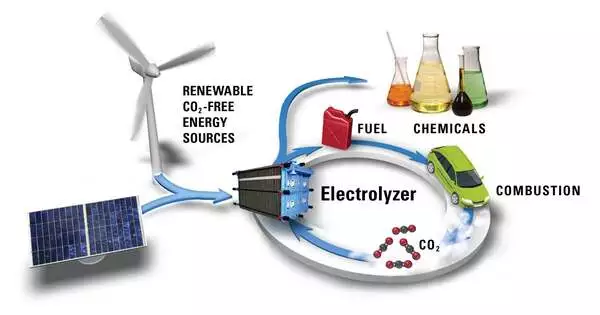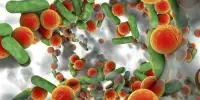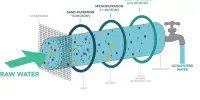In the context of CO2 recycling, the role of the electrolyte is critical in facilitating the electrochemical conversion of carbon dioxide (CO2) into valuable products. CO2 recycling, also known as CO2 electroreduction or electrochemical CO2 conversion, is a technology that uses CO2 as a feedstock to produce useful chemicals, fuels, and other valuable products, thereby reducing greenhouse gas emissions and contributing to a more sustainable future.
Electrolysis can convert the greenhouse gas carbon dioxide into usable hydrocarbons. The design of the electrolysis cell is critical in this process. The zero-gap cell is ideal for industrial processes. However, there are still issues: the cathodes clog up quickly.
Carbon dioxide, or CO2, is produced when oil, coal, or natural gas are burned. This well-known greenhouse gas is a significant contributor to global warming, but it is also a raw material. Technically, it is possible to convert CO2 into useful carbon compounds, a process that requires energy, water, appropriate electrodes, and special catalysts. CO2 can be converted electrochemically to carbon monoxide, formate, or methane, as well as ethylene, propanol, acetate, and ethanol. Industrial processes, on the other hand, must be designed to be highly selective and extremely efficient in order to produce only the desired products and not a mixture of products.
By electrolytically reducing CO2 to useful hydrocarbons, we can produce new fuels without using fossil resources. We thus are putting the CO2 back into the cycle, just like recycling.
Dr. Matthew Mayer
Converting CO2 back into fuel
“By electrolytically reducing CO2 to useful hydrocarbons, we can produce new fuels without using fossil resources. We thus are putting the CO2 back into the cycle, just like recycling,” explains Dr Matthew Mayer, leader of the Helmholtz Young Investigator Group “Electrochemical Conversion” at HZB. The electrical energy for the electrolysis can be provided by renewable energy from wind or solar, making the process sustainable.
The zero-gap cell: a sandwich of many layers
We learned in school that electrolysis can be performed in a simple beaker of water; an extension of this is the H-cell, which is shaped like the letter H. Such cells, however, are not suitable for industrial use. Instead, industrial electrolyzers are built using a sandwich architecture with several layers: The electrodes that conduct current and are coated with catalysts are on the right and left, as is a copper-based gas diffusion layer that allows CO2 gas to enter and a separation membrane. The electrolyte (called anolyte when supplied at the anode) is made up of dissolved potassium compounds and allows ions to move between the electrodes. The membrane is designed to allow positively charged ions through while blocking negatively charged potassium ions.

The problem: potassium crystals
Nonetheless, electrolyte potassium ions pass through the membrane and form tiny crystals at the cathode, clogging the pores. “This shouldn’t happen,” Flora Haun, a Ph.D. student on Matthew Mayer’s team, says. The scientists were able to study the process of crystal formation at the cathode in detail using scanning electron microscopy and other imaging techniques. “With energy-dispersive X-ray analysis, we were able to locate the individual elements and show exactly where potassium crystals were forming,” Flora Haun says.
According to the findings, the more potassium in the electrolyte, the more the cathode clogs. But there is no simple solution: lowering the potassium concentration is good on one hand, but bad on the other, because the reaction equilibrium shifts, producing carbon monoxide instead of the desired ethylene.
The electrolyte is the key
“The most important finding is that cations can still pass through the anion exchange membrane, but to varying degrees depending on the electrolyte concentration.” And that by varying the concentration of the electrolyte, we can control which products are formed from CO2,” explains Dr. Gumaa El Nagar, a postdoctoral researcher on the team. “In the next step, we want to use operando and in situ measurements using X-rays to find out in detail how ion migration in the cell affects the chemical reaction processes,” says Matthew Mayer.















